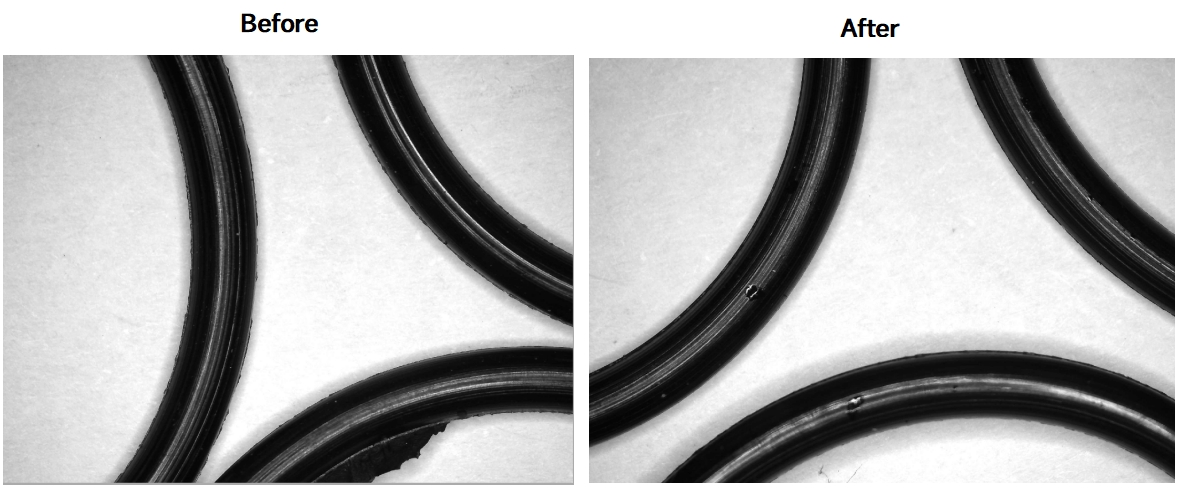Recently, a customer’s ethylene propylene diene monomer (EPDM) O-rings still exhibited fine burrs after tumbling, failing final quality inspection. Facing a tight deadline, the customer urgently contacted STMC for cryogenic deflashing services. With STMC’s professional expertise, the burrs were precisely controlled within 0.03mm , fully meeting the customer’s high standards.
Tumbling ≠ Complete Deburring? Material-Specific Solutions Are Key
The customer initially assumed tumbling alone would suffice for precision requirements. However, post-inspection revealed that due to EPDM’s high elasticity and tough burrs, tumbling could not fully remove micro residues. This case reaffirms that different materials and product structures require tailored deburring solutions—relying solely on one process may compromise final quality.
Cryogenic Deflashing: Ensuring Precision and Efficiency
STMC’s cryogenic deflashing technology uses ultra-low temperatures to embrittle burrs, followed by high-speed media blasting, enabling precise removal of residual flashes—especially for elastic, deformable rubber parts. In this project, the team responded swiftly, delivering damage-free, high-precision deburring within the deadline, resolving the customer’s urgent crisis.
STMC’s Core Advantages
Precision Control: Achieves deburring down to 0.01mm, meeting stringent automotive and medical industry standards.
Material Versatility: Efficiently processes silicone, FKM, EPDM, and more.
Rush Order Support: Expedited processing services to help customers seize market opportunities.
Conclusion
Tumbling and cryogenic deflashing are not replacements but complementary processes. STMC recommends evaluating material properties and product requirements upfront to select the optimal deburring solution. For technical consultation or processing services, contact STMC today!
Post time: Jun-27-2025


